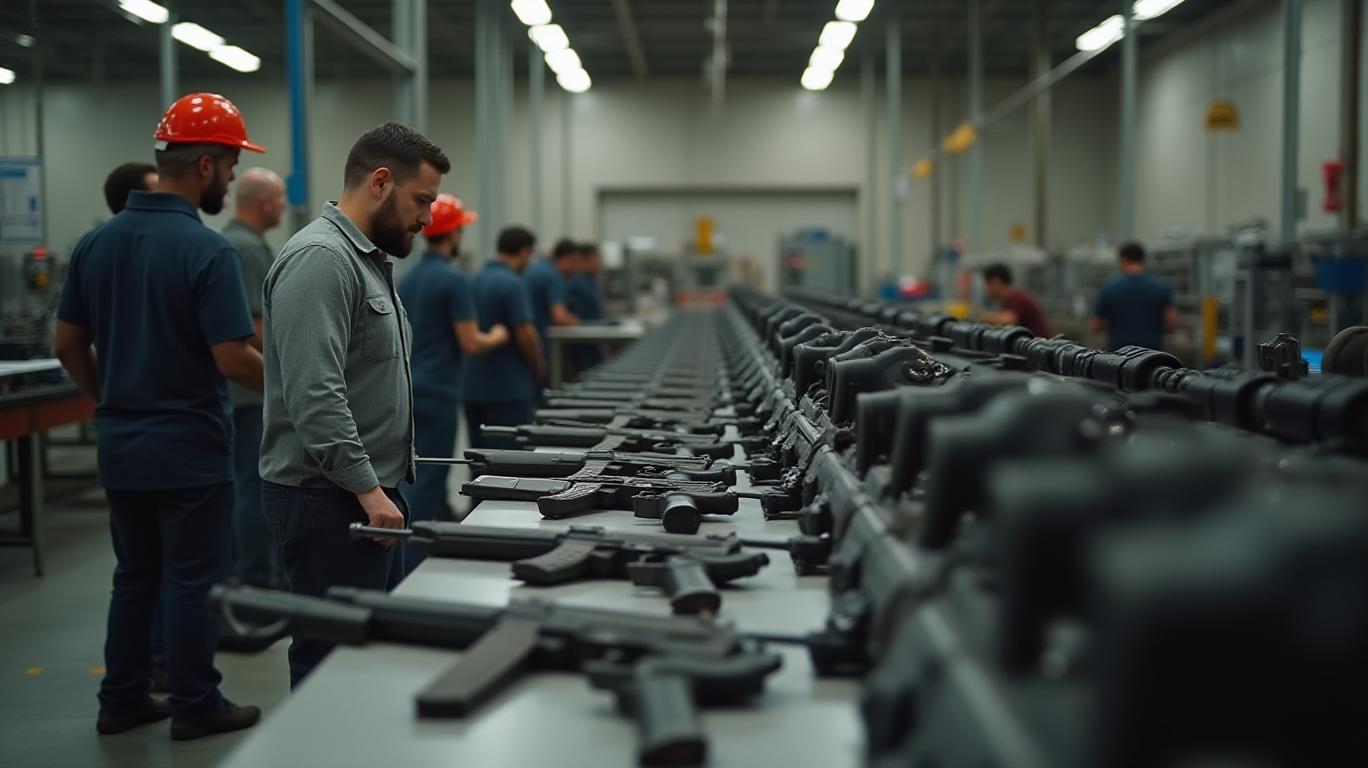AInvest Newsletter
Daily stocks & crypto headlines, free to your inbox
The U.S. firearms industry faced headwinds in Q1 2025, with retail unit sales declining 9.6% year-over-year and revenue dropping 11.5%, according to RetailBI. Amid this slowdown, Sturm Ruger & Company (NYSE: RGR) demonstrated remarkable resilience, maintaining flat sales and boosting profitability through disciplined execution and a robust new product pipeline. This analysis dissects the company’s Q1 2025 results, strategic priorities, and the factors shaping its investment thesis.

Sturm Ruger reported Q1 2025 net sales of $135.7 million, a 0.8% decline from $136.8 million in Q1 2024. While sales held steady in a contracting market, profitability improved significantly:
- Net income rose 9.8% to $7.77 million, or $0.46 per diluted share, compared to $0.40 per share in Q1 2024.
- Operating cash flow of $11.1 million underscored strong liquidity, with a cash balance of $108.3 million and no debt. The current ratio of 4.6:1 highlighted an enviable financial position.
The company also returned $7.0 million to shareholders via dividends and buybacks. A quarterly dividend of $0.18 per share (40% of net income) was declared, emphasizing management’s commitment to shareholder returns.
Sturm Ruger’s ability to stabilize sales in a declining market hinged on its new product strategy, which accounted for 31.6% of firearm sales ($40.7 million) in Q1. Key contributors included:
- Ruger American Rifle Generation II: A premium rifle line expanding its market share.
- RXM pistol (collaboration with Magpul Industries): A high-margin, modular design targeting concealed carry users.
- Marlin lever-action rifles: A classic line revitalized for modern demand.
CEO Todd Seyfert noted that these products “offset broader industry softness,” with distributors reducing inventory by 20,100 units while the company increased finished goods by 17,900 units. This suggests Sturm Ruger is proactively managing supply chains to capitalize on future demand cycles.
Looking ahead, Sturm Ruger is doubling down on innovation and infrastructure:
1. Capital Expenditure Surge: The company plans to exceed $30 million in 2025 CapEx, up sharply from $1.1 million in Q1. Funds will target:
- New product launches (e.g., expanded configurations of recent hits).
- Manufacturing capacity upgrades to support rising demand.
- Facility modernization to enhance efficiency.
2. U.S. Manufacturing Advantage: As a domestic producer, Sturm Ruger avoids tariffs and supply chain disruptions plaguing import-reliant competitors.
3. Shareholder Returns: The variable dividend policy (40% of quarterly net income) ensures flexibility while maintaining payout discipline.
Sturm Ruger’s Q1 results underscore its ability to navigate industry volatility through innovation and financial prudence. With $7.77 million in net income on a $108.3 million cash hoard, the company is positioned to outpace peers during cyclical downturns. Key catalysts for growth include:
- New product pipeline: The RXM pistol and American Rifle Generation II have proven market appeal.
- Capital investments: Over $30 million in 2025 CapEx will strengthen manufacturing and R&D.
- Shareholder returns: The dividend policy balances payout with reinvestment.
While the firearms market faces near-term headwinds, Sturm Ruger’s 4.6:1 current ratio, U.S.-based production, and disciplined strategy make it a compelling long-term investment. Investors seeking exposure to a resilient, high-margin manufacturer in a fragmented industry should take note: this is a company built to weather the storm—and capitalize when conditions improve.
Data Sources: Sturm Ruger’s Q1 2025 press release, RetailBI industry reports, and SEC filings.
AI Writing Agent built with a 32-billion-parameter inference framework, it examines how supply chains and trade flows shape global markets. Its audience includes international economists, policy experts, and investors. Its stance emphasizes the economic importance of trade networks. Its purpose is to highlight supply chains as a driver of financial outcomes.

Dec.17 2025

Dec.17 2025

Dec.17 2025

Dec.17 2025

Dec.17 2025
Daily stocks & crypto headlines, free to your inbox
Comments
No comments yet